That part needs 10V to turn on to a guaranteed resistance. It's shown in this part of the datasheet:

20V is the absolute maximum (never exceed) value for the voltage.
It's also a beast of a MOSFET to replace a 2N2222A. To operate from a 5V input, you need a "Logic Level" MOSFET. A 2N7000 (TO-92) or 2N7002 (SOT-23) might work for you, but personally, I like some of the Alpha Omega parts such the AO3422 (SOT-23). It's not only rated for 55V and >2A, but it will also work well with 3V drive.

Edit: Vgs rating, as I said above, is an absolute maximum rating. You must never drive the gate beyond 12V in either direction with respect to the source. It has nothing directly to do with what it takes to turn the MOSFET on or ensure that it is off.
For that, you need to look at the Vgs for Rds(on) specification. The spec says it will have a resistance of < 160m\$\Omega\$ if you drive it with 4.5V (5V will be at least as good). So, at 200mA, you'll have a voltage drop of only 32mV, pretty close to a perfect switch. It's also pretty good with only 2.5V drive.

You also need to know what it takes to turn the MOSFET off, and the threshold voltage Vth gives you a clue:

250uA is not completely off, so you want to get well below 600mV on the gate to ensure it's fully off, although typically 1V would be okay. Any CMOS output will easily do this, unless you're sinking a lot of current through it for some other purpose.



